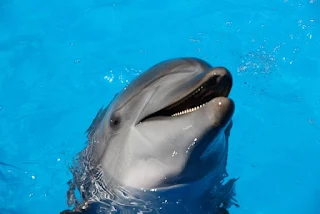6 Surprising Things You Didn't Know About Dolphins
Introduction
Surprising Fact #1: Dolphin Social Structure
Surprising Fact #2: Dolphin Communication
Surprising Fact #3: Dolphin Sleep Patterns
Surprising Fact #4: Dolphin Intelligence
Surprising Fact #5: Dolphin Lifespan
Surprising Fact #6: Dolphin Echolocation
Conclusion
Frequently Asked Questions (FAQs)
Introduction
Dolphins are fascinating creatures that capture the imagination of people around the world.
Known for their intelligence and playful nature, dolphins inhabit oceans and seas, showcasing remarkable behaviors that amaze researchers and enthusiasts alike.
This listicle will explore six surprising facts about dolphins that may change how you view these incredible marine mammals.
Surprising Fact #1: Dolphin Social Structure
Contrary to popular belief, dolphins don't just swim around aimlessly. They have a complex social structure that mirrors our own, a fact that is truly awe-inspiring.
Dolphins live in pods, groups of dolphins that work together, communicate, and even play. Depending on the species, these pods can consist of a few individuals to hundreds.
Dolphins form strong bonds within these pods, cooperate, and exhibit hierarchical behaviors, showcasing their sophisticated social lives.
Surprising Fact #2: Dolphin Communication
Dolphins are known for their intricate communication skills, a unique aspect of their behavior that never fails to intrigue.
They use a combination of clicks, whistles, and body language to convey messages to each other.
Surprisingly, dolphins have signature whistles and unique vocalizations that act like names.
Dolphins use these whistles to identify themselves within their pod, showing an advanced level of individual recognition and communication.
Surprising Fact #3: Dolphin Sleep Patterns
While dolphins need to sleep like other mammals, their sleep patterns differ. Dolphins are known for their ability to engage in unihemispheric sleep, where one hemisphere of their brain remains active while the other sleeps.
This allows them to rest and stay vigilant simultaneously, which is crucial for survival in the ocean environment, where threats can arise at any moment.
Surprising Fact #4: Dolphin Intelligence
Dolphins are not just intelligent; they are among the most intelligent animals on the planet.
Their problem-solving abilities, creative thinking, and even cultural behaviors within their pods command respect.
Studies have shown that dolphins can understand complex commands, use tools, and empathize with other dolphins and humans.
Their intelligence continues to astound scientists, leading to further research into understanding the depths of their cognitive abilities.
Surprising Fact #5: Dolphin Lifespan
The lifespan of dolphins varies depending on the species, but many dolphins can live for several decades.
Some species, like the bottlenose dolphin, can live up to 40 or 50 years in the wild, while others have shorter lifespans.
Environmental conditions, food availability, and human impacts can influence dolphin lifespans, highlighting the importance of conservation efforts to protect these remarkable animals.
Surprising Fact #6: Dolphin Echolocation
One of the dolphins' most impressive abilities is echolocation. Dolphins emit high-frequency clicks or sonar pulses that bounce off objects in their environment.
By interpreting the echoes, dolphins can navigate, locate prey, and even identify objects with remarkable precision.
This echolocation ability is crucial for their survival in murky waters and showcases their incredible sensory adaptations.
Conclusion
As we delve into these surprising facts, we gain a deeper appreciation for these marine mammals and the importance of conservation efforts to ensure their survival in our oceans.
Whether observing them in the wild or learning about them through research, dolphins remind us of the wonders of the natural world and our responsibility to protect them.
Let's remember that our actions today can make a difference in the future.
Frequently Asked Questions (FAQs)
Q: Are dolphins endangered?
A: Some dolphin species are endangered due to threats like habitat loss, pollution, and fishing activities. Conservation efforts are crucial to protect these species and their habitats.
Q: Do dolphins have natural predators?
A: Dolphins have few natural predators due to their size and intelligence. Sharks and large whales are among the few that may prey on dolphins, especially calves or weakened individuals.
Q: Can dolphins live in freshwater?
A: While most dolphins are found in saltwater environments, some species, like the Amazon river dolphin, can inhabit freshwater rivers and lakes.
Q: How do dolphins hunt for food?
A: Dolphins use various hunting techniques depending on the species and prey. Some use teamwork to corral fish into tight groups, while others use echolocation to locate and catch individual prey.
Q: Are dolphins friendly towards humans?
A: Dolphins are known to be curious and may approach humans in the wild. However, interactions should be respectful and follow guidelines to ensure the well-being of both dolphins and humans.
Q: Do dolphins migrate?
A: Yes, many dolphin species undertake seasonal migrations in search of food, warmer waters, or breeding grounds. These migrations can span hundreds or even thousands of miles.





Comments
Post a Comment